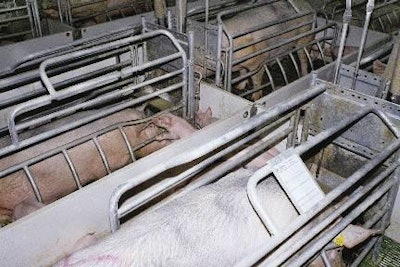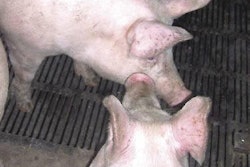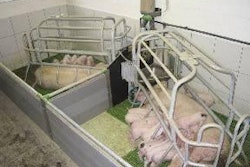
Dr Casanovas Granell is a Spanish swine-specialist veterinarian who specialises in the management and facilities of breeding herds.
As the business of producing pigs has intensified, farms have needed to become progressively more organised in their management by establishing homogeneous production groups. But sow herds can select from several different options for managing in batches. For example, some producers practising batch management choose to form their groups on a weekly cycle. Others prefer every 2, 3 or 4 weeks or even every 5 weeks. At the other extreme there are big units weaning several times per week, having more than one batch inside every week.
The decision on the best option depends on multiple factors including the individual characteristics of the farm. In this review and in following issues we will examine the positive and negative points about each possibility, to help you choose the batch management system that is most suited to your herd.
Setting cycle length
The concept of batch management considers the production cycle of the sow according to the parameters of gestation length, weaning-to-mating interval and lactation length. Of these, only the length of lactation is a variable, but even that can be regarded as fixed for our purposes because the herd will have already decided its weaning age. The number of days of lactation determine the duration of the sow's reproductive cycle (Table 1). Therefore a herd weaning at 21 days has a cycle interval of 20 weeks, but weaning at 28 days extends the cycle to 21 weeks if both farms are mating their sows weekly (so forming a new batch every week).
With weekly batch management we will need as many batches as there are weeks in the reproductive cycle. It is a common misunderstanding among producers that the number of batches depends on the productive efficiency of the unit, so more groups of sows are needed as productivity declines. That is wrong. The number of batches depends exclusively on the parameters set out in Table 1 and the frequency of weaning.
Moreover, the calculation does not use the average reproductive cycle length of all the sows on the farm. Herds with a median of 20 weeks per cycle with a weaning age of 3 weeks do not exist they would need to have a reproductive efficiency of 100%. Realise too that the theoretical length of the potential cycle for sows that are working correctly is used only to determine the number of batches, not the number of sows in each batch. This factor of batch size does vary according to productive efficiency. Obviously, as productivity changes, it alters the number of sows required in a batch to achieve the farrowing objective.
Influence of weaning
You could say that a batch remains fixed for timing, but variable in terms of the sows themselves. It changes in size when they repeat to oestrus, abort, die or are culled from the herd. Once the reproductive cycle length of the herd has been established, however, the only parameter that will affect the number of batches is how often we wean the sows. Weaning is at the centre of everything that happens because it defines the next mating and farrowing.
Table 2 shows batch management based on forming new groups every week with weaning at 21 or 28 days. Let us say the decision is made to change to having batches every 2 weeks. The reproductive cycle length stays the same (20 weeks), but we have half the number of groups compared with weaning weekly so there are only 10 batches. The other options for a 20-weeks cycle are 5 batches (weaning every 4 weeks) or 4 batches (every 5 weeks).
There is a point to note concerning batches every 3 weeks. Because 20 weeks is not divisible between 3 to give a whole number, for batch management it is usually necessary to wean at 28 days and therefore extend the cycle length to 21 weeks. On the basis of having the weanings every 3 weeks, a cycle of 21 weeks gives 7 batches.
Alternatively we could decide to keep the weaning age at 21 days and still follow a cycle length of 20 weeks, but then the herd must accept a one-week reduction in the gap between certain batches. Every 20 weeks, from one group to the next would have an interval of only 2 weeks instead of 3 weeks. A similar event occurs if a herd weaning at 28 days works with batches every 5 weeks. Its reproductive cycle of 21 weeks cannot be divided cleanly by 5. In this situation, every 21 weeks there would be a batch that gained one week in the sense that the interval between batches increased to 6 weeks. Working with batches every 4 weeks would have the same effect, but we cannot wean at 28 days in this case because it adds too much time.PIGI

















